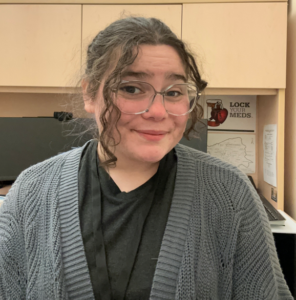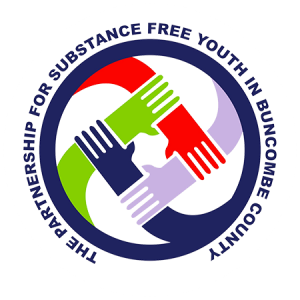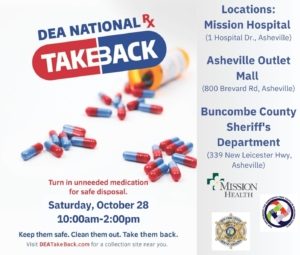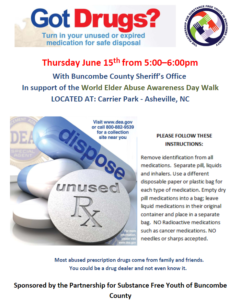
Barry Merluzzo, Prevention Coordinator for the Partnership for Substance Free Youth
Barry Merluzzo (he/him) attended Salem State University in Massachusetts and obtained an AAS degree in Forestry and a BS degree in Criminal Justice.
Prior to joining RHA, Barry served as a park ranger, program coordinator and as a director promoting recovery, wellness, horticultural therapy, and environmental education initiatives for several nonprofit organizations and agencies.
Barry spends his free time exploring and photographing the natural world and its diverse landscapes. He also enjoys hiking, caving, beekeeping, and gardening.
Barry relocated to Asheville 3 years ago and currently lives in Arden NC with his partner Camille, two cats (Tammy and Bucky) and many, many plants.

Bri Plummer, Prevention Specialist II for the Partnership for Substance Free Youth
Bri Plummer (she/her) is the new Prevention Specialist II at RHA Prevention Resource Centers in Asheville. She was born and raised in Western North Carolina and currently lives in Waynesville.
This past August she obtained her Master of Public Health in Epidemiology from Emory University. Before that, she got her Bachelor of Arts in Psychology with a minor in Public Health.
Substance use prevention has always been her passion and focus since she was in middle school, where she participated and co-founded the Western North Carolina branch of Teen Institute. She looks forward to learning more about this field and she is excited to be a part of RHA and the Partnership for Substance Free Youth.
Some fun facts about Bri are that her favorite animal is the manatee, she collects stickers, loves coffee, and has two beautiful pets (Kuma the Akita and Traffy the Calico).
The Partnership for Substance Free Youth in Buncombe County (PSFYBC) is taking part in the semi-annual National Drug Enforcement Agency Prescription Take Back Day Saturday, April 22 at several locations across Buncombe County.
PSFYBC is collaborating with local law enforcement and businesses from 10 a.m. to 2 p.m. at three locations Saturday. These drug take-back events allow the community to safely dispose of unused or expired medicines in a convenient and responsible way.
Saturday’s event will take place at multiple locations across Buncombe County from 10 a.m. to 2 p.m.:
Sheriff’s Satellite Office: 339 New Leicester Hwy
Asheville Outlets: 800 Brevard Rd.
Mission Hospital: 1 Hospital Drive
Radioactive medications, such as cancer medications, cannot be accepted at the take-back event. Needles or sharps will also not be accepted.
“Our drug take backs are a great opportunity to clean out your medicine cabinets and safely and anonymously turn in prescription drugs. This is a safe and practical way to prevent opioid and prescription medication-related deaths,” states Buncombe County Sheriff Quentin Miller
Thank you, HCA Healthcare for inviting Prevention Coordinator, Miranda Poe to do an interview and for supporting the DEA National Take Back Days through the “Crush the Crisis” initiative. Check out their 2022 video below.
“I don’t see any evidence that the DEA has produced that supports that conjecture,” said Nabarun Dasgupta, a researcher studying illegal drugs at the University of North Carolina
“We have not seen any connection to Halloween. I want to be very clear, if we see it, I promise, you have my commitment, any credible evidence, we will come out and we will tell you. What we do see is social media we see fake pills, like the blue Oxys that you just showed, rainbow pills, a new tactic being used by the cartels, and here’s what we worry about, we have middle schoolers and high schoolers who are dying of fentanyl poisoning. We have 12 year olds, 13 year olds, 14 year olds who are dying. And so we are not seeing it in Elementary school. We are not seeing it in Halloween candy. The bottom line is that this is all over social media and so we know its out there. Parents, we are begging families and parents to talk with their loved ones and to talk with their children. Never take a pill that wasn’t prescribed directly to you. Help your child come up with an exit strategy. What do you do if a coach, or a best friend, or another member of your family offers your kid a pill. No legitimate pharmaceuticals can be sold on social media, so make sure your kids know that. And finally, just understand that many people that are dying of fentanyl poisoning have no idea that they were taking fentanyl…” – Anne Milgram, DEA administrator
“False alarms and drug scares matter because they distract attention from need for better healthcare and addiction treatment at a moment when more than 100,000 Americans are dying from OD.” – Brandon del Pozo, addiction medicine researcher at Brown University
Below is the full proclamation from President Joe Biden.
NATIONAL YOUTH SUBSTANCE USE PREVENTION MONTH, 2022
– – – – – – –
BY THE PRESIDENT OF THE UNITED STATES OF AMERICA
A PROCLAMATION
During National Youth Substance Use Prevention Month, we rededicate ourselves to transforming the lives of America’s youth through prevention. We commit to building and supporting communities where young Americans can live healthy and fulfilling lives, free from the dangers of substance use, laying the groundwork for strong future generations.
Our country has been battered by twin crises in recent years: an overdose epidemic and COVID-19. Last year, a record 107,000 Americans died of drug overdoses, ripping a hole in families across every community in the Nation. More than a thousand of those who died were teenagers — sons, daughters, sisters, brothers, and friends who still had their whole lives ahead of them. We cannot let that continue. My Administration is drawing on evidence-based strategies to prevent substance use and to intervene early so we can help keep America’s young people healthy and safe. We are supporting programs that teach young people about the risks of drug and alcohol use — including the dangers of illicit fentanyl and counterfeit pills — and about the life-saving power of naloxone.
Preventing substance use during adolescence has been shown to significantly reduce the chance of developing a substance use disorder later in life. For every dollar we spend today on effective school-based prevention programs, we save $18 in the future by avoiding potential medical costs and boosting productivity on the job. Prevention programs also make young people less likely to one day have children who use substances, highlighting the far-reaching value these efforts have across generations.
Americans can all agree that this work is critical –- irrespective of their political party affiliation. That is why I made beating the opioid epidemic — our Nation’s most deadly drug use crisis — a pillar of the bipartisan Unity Agenda that I unveiled in this year’s State of the Union. I know that together, with resources and smart policy, we can overcome it. Last year, we invested nearly $4 billion in American Rescue Plan funds to expand mental health and substance use services and to help school districts increase the number of social workers on staff by as much as 54 percent. My Fiscal Year 2023 budget proposes $3.1 billion in National Drug Control funding for prevention, nearly $850 million more than last year. We have already provided more than $120 billion for quality tutoring, mental health, and afterschool programs. We are supporting Drug-Free Communities coalitions in all 50 States, giving local communities the tools and resources to address their own youth substance use issues in ways that are culturally appropriate. We are working to ensure that States leverage Medicaid funding to support schools providing mental health and substance use care to our youth. We are also working to ensure full parity between physical and mental health care so all Americans have access to quality, affordable care, including for substance use.
This month, I call on everyone — parents, siblings, friends, neighbors, teachers, community members, and more — to reach out to the young people in their lives to share information, promote healthy lifestyles, and help transform lives through evidence-based substance use prevention. We thank every individual and every organization working on the front lines to prevent youth substance use. And we renew our commitment to building a healthier and more supportive Nation where all young people can reach their full potential and achieve their dreams. I will never quit fighting to get everyone the support and resources needed to beat this crisis. No one is ever alone.
NOW, THEREFORE, I, JOSEPH R. BIDEN JR., President of the United States of America, by virtue of the authority vested in me by the Constitution and the laws of the United States, do hereby proclaim October 2022 as National Youth Substance Use Prevention Month. Let us all take action to implement practice and evidence-based prevention strategies and improve the health of our Nation.
IN WITNESS WHEREOF, I have hereunto set my hand this thirtieth day of September, in the year of our Lord two thousand twenty-two, and of the Independence of the United States of America the two hundred and forty-seventh.
JOSEPH R. BIDEN JR.
At the end of August 2022, President Joseph Biden sent out a proclamation for recovery month. In his proclamation, he included, “we recommit to helping prevent substance use disorder.” As the work we do is centered on prevention, we are glad to see prevention included in this proclamation. We are grateful for the recognition of health disparities in the United States including disproportionate impacts on indigenous communities and people of color, including less access to care and greater criminalization. Thank you for putting funding into prevention, harm reduction, and treatment services!
Visit recoverymonth.net for more information and resources. In the words of one of our coalition members, Sherron Bristol, “Life happens to all of us. We’re all recovering from something.” Recovery is for everyone.
Starting Dec. 1, 2022, NC Medicaid Managed Care Standard plans and Tailored Plans will “require contracted providers, not including retail pharmacies, and with the exception of the residential provider facilities, to implement a tobacco-free policy covering any portion of the property on which the participating provider operates that is under its control as owner or lessee, to include buildings, grounds, and vehicles.”
More information can be found here and at Breathe Easy NC.
Thursday, September 22 from 9 am – 10 am, Beth Macy, will be at Gaston College for an in-person conversation and book signing on her new book, Raising Lazarus: Hope, Justice, and the Future of America’s Overdose Crisis. This timely book delivers a “deeply reported, deeply moving” account of everyday heroes fighting on the front lines of the overdose crisis.
This event is free and open to the public, with registration. Doors will open at 8:30 AM, and the event will begin at 9 AM.


